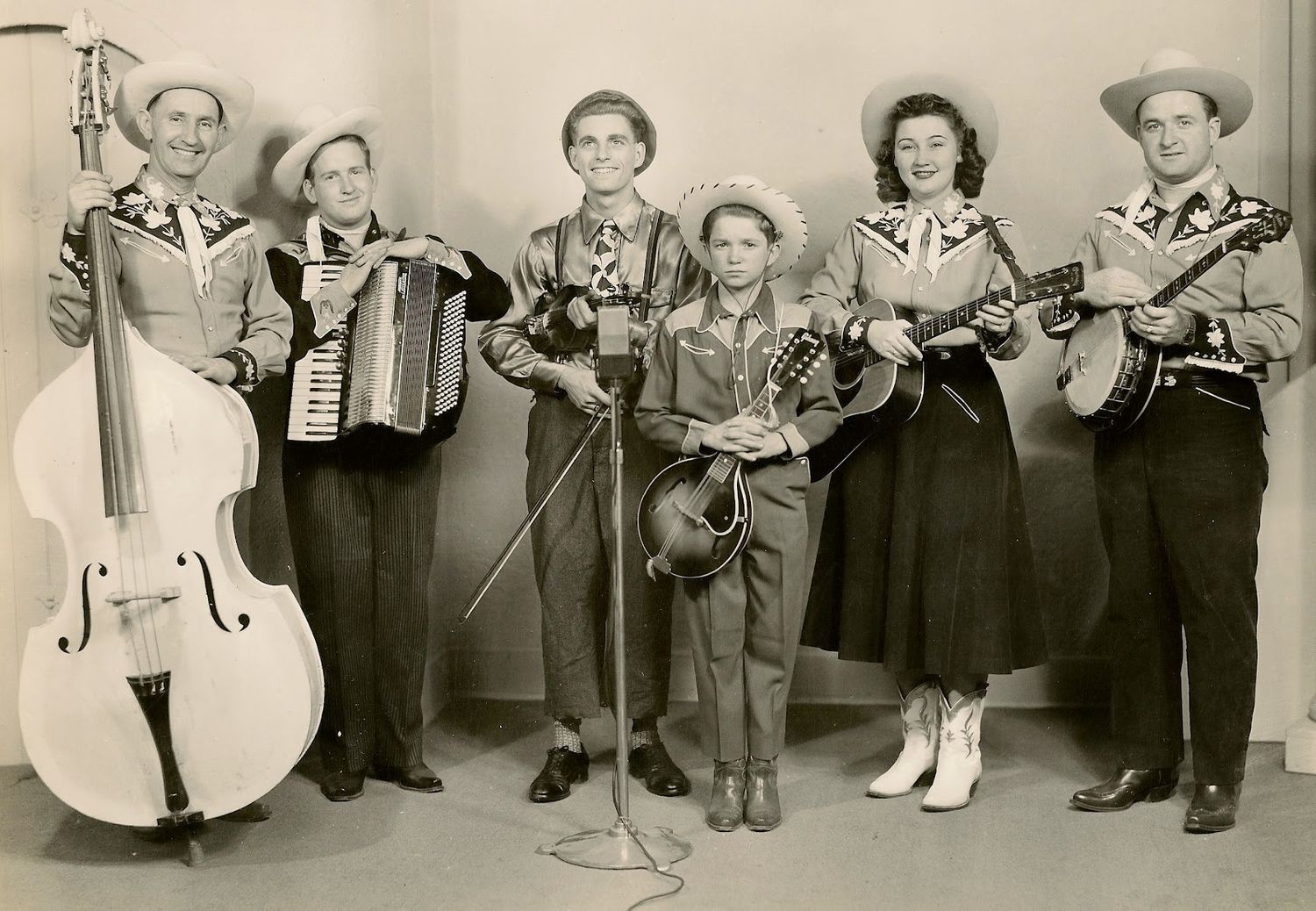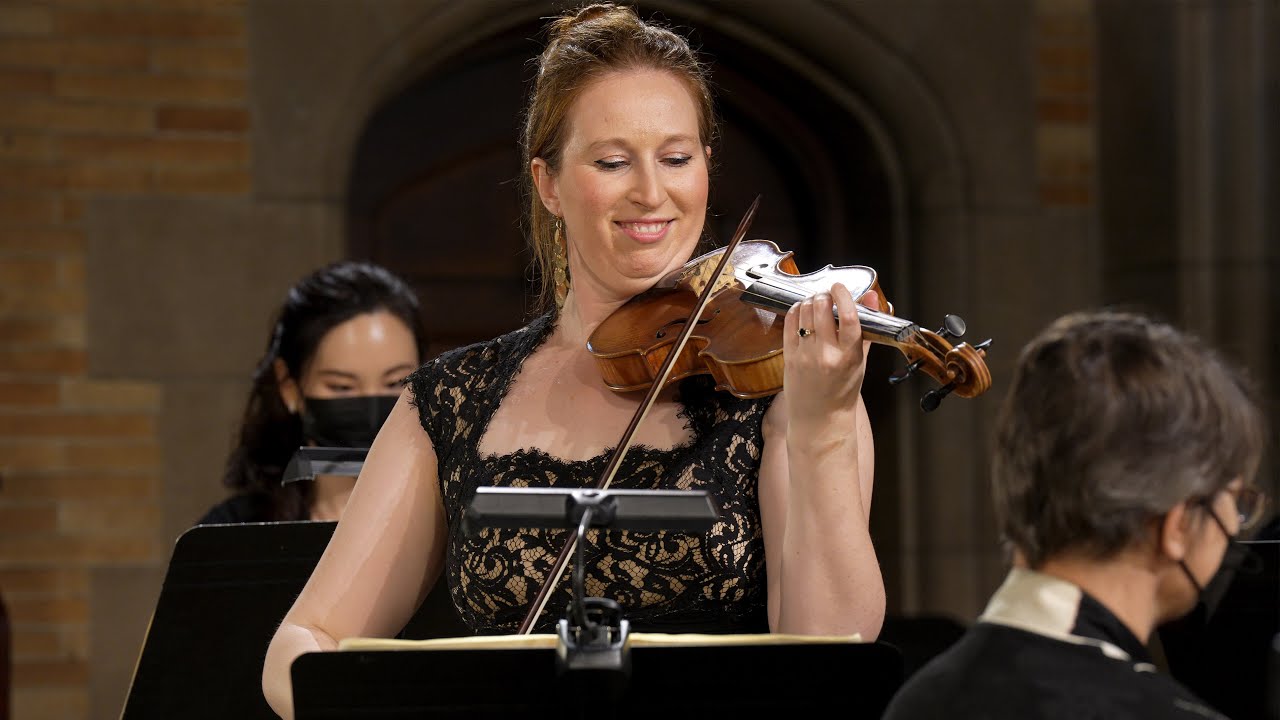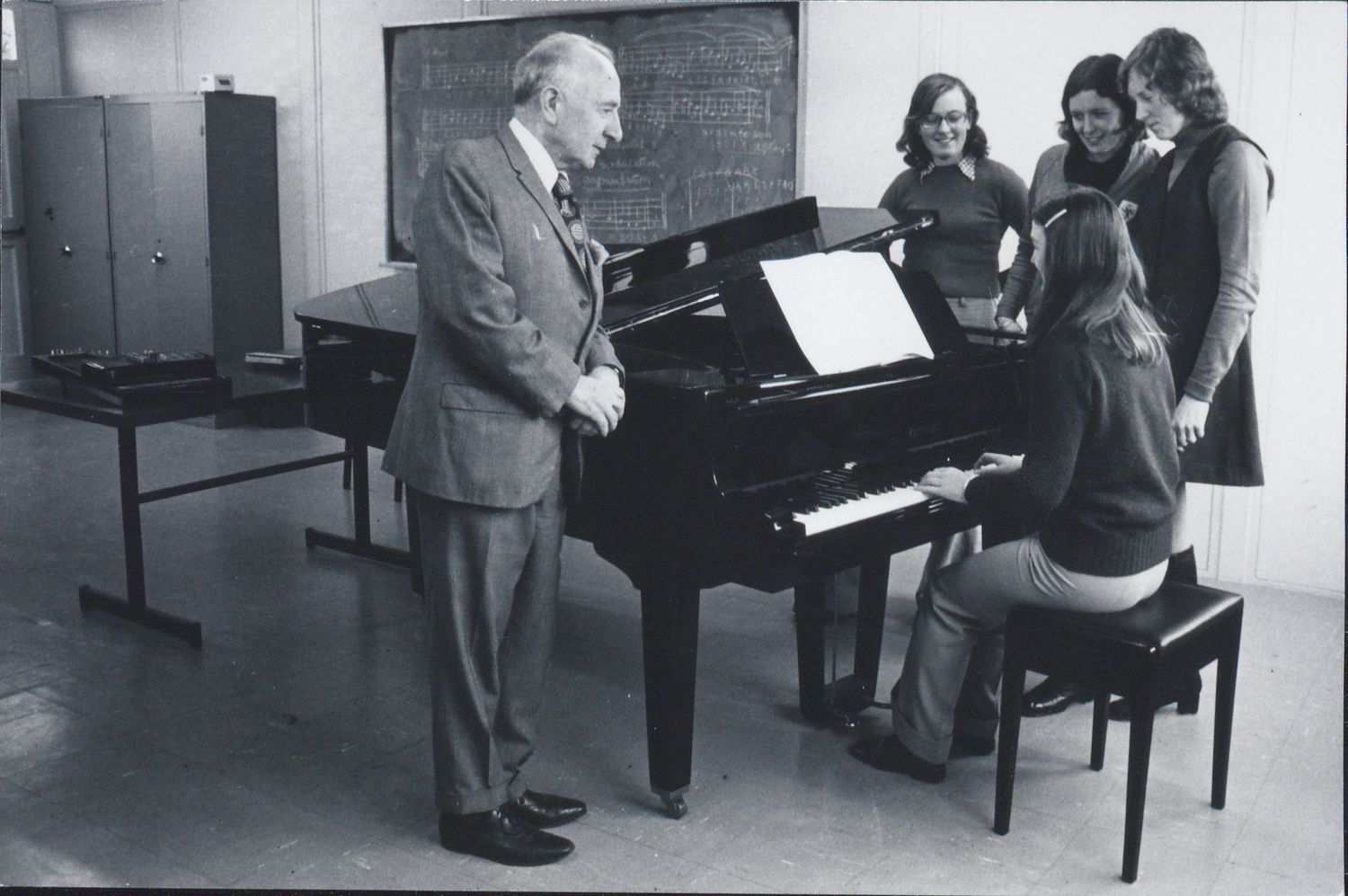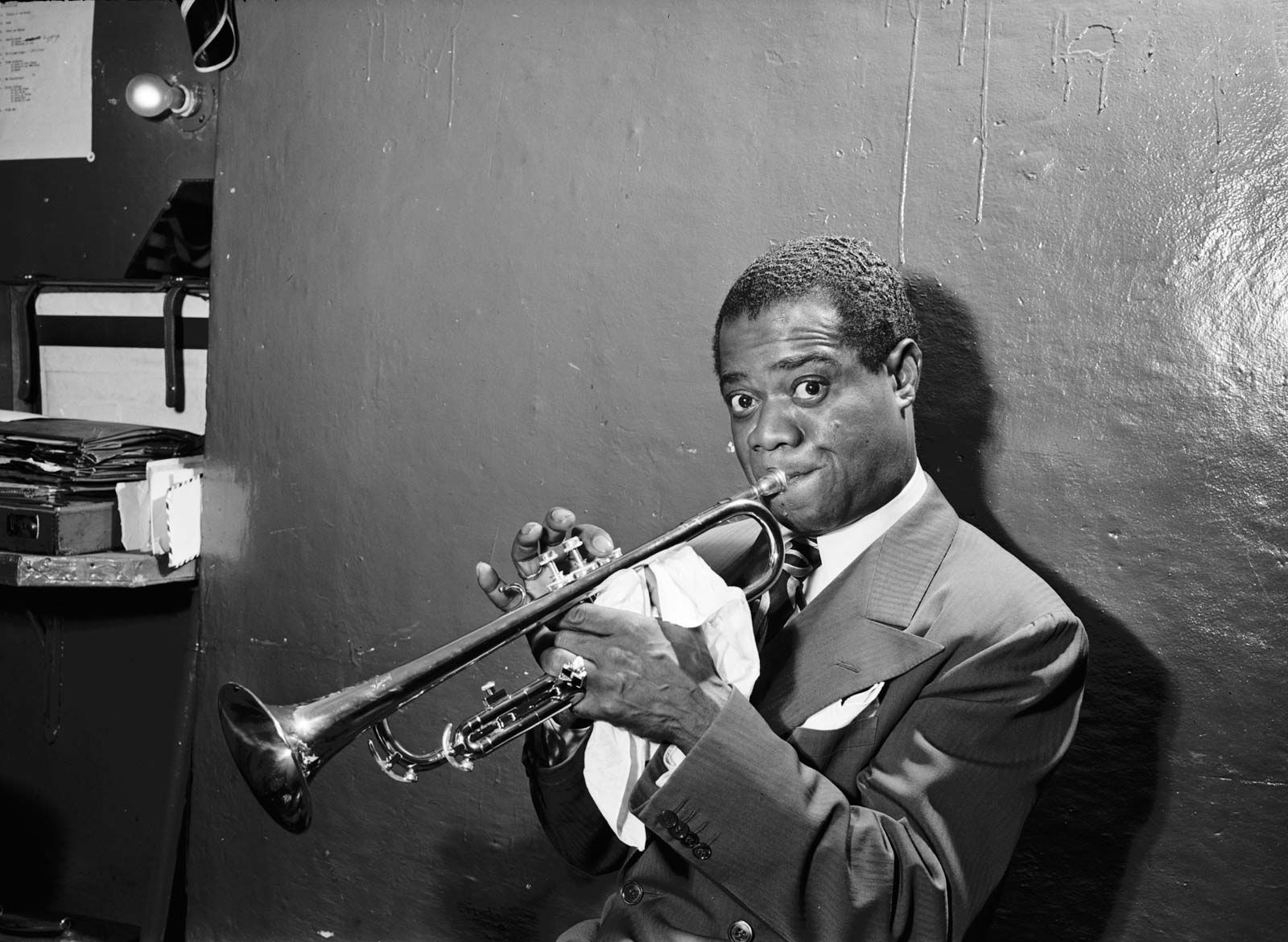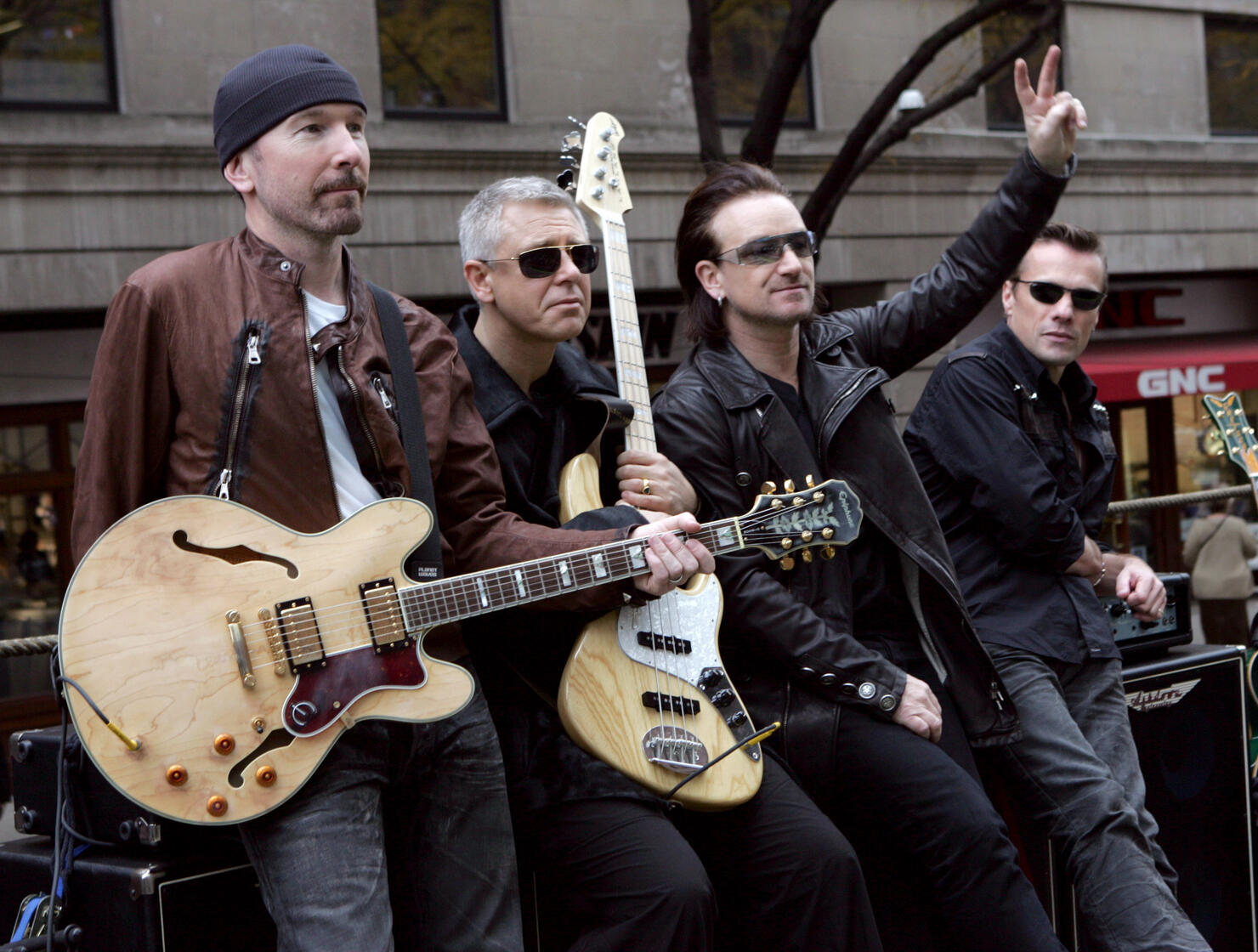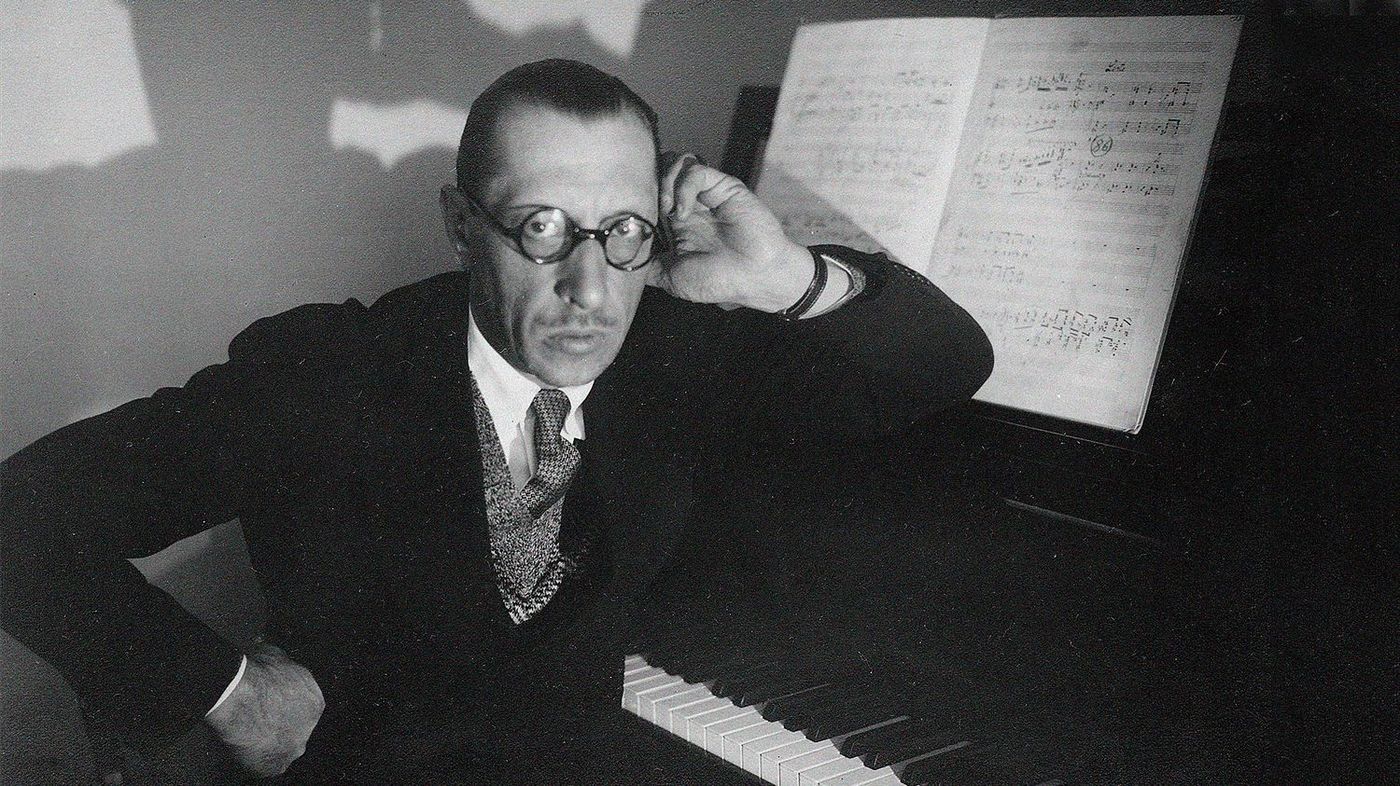Home>Events & Info>Music History>What Are Important Points In Music History
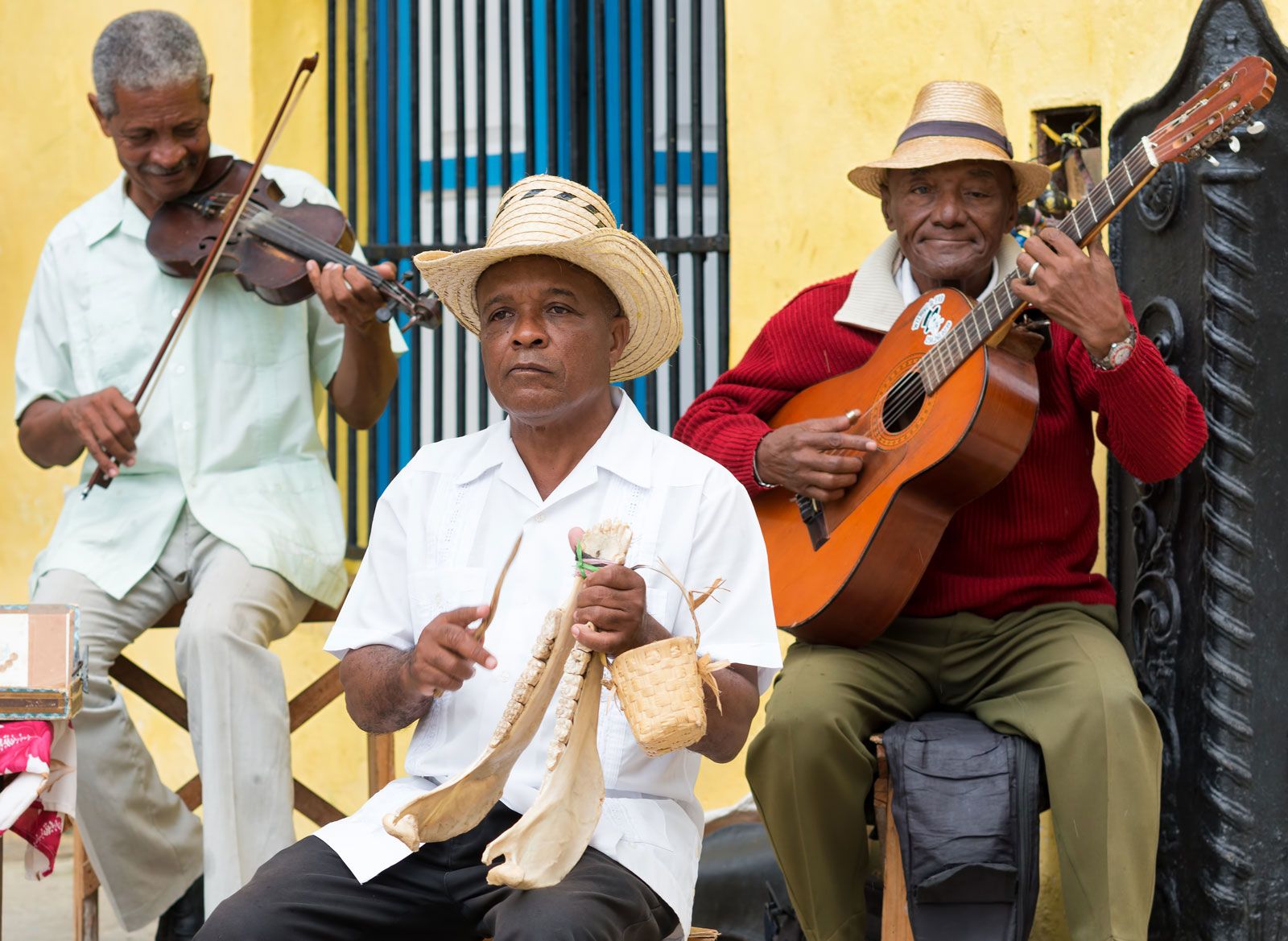

Music History
What Are Important Points In Music History
Modified: January 22, 2024
Discover the key moments and influential figures in music history. From classical to modern, explore the important points in the evolution of music.
(Many of the links in this article redirect to a specific reviewed product. Your purchase of these products through affiliate links helps to generate commission for AudioLover.com, at no extra cost. Learn more)
Table of Contents
Introduction
Music history is a fascinating journey through time, showcasing the evolution and impact of music on society and culture. From the ancient civilizations to the modern era, music has always been a powerful form of expression, reflecting the beliefs, emotions, and values of its time.
Throughout history, music has served various purposes, from religious rituals to entertainment, from storytelling to political protest. It has evolved across different genres, styles, and techniques, leaving a lasting legacy that continues to shape the music we enjoy today.
Studying music history provides us with valuable insights into the development of musical forms and techniques, the contributions of composers and musicians, and the societal influences that shaped musical trends. It allows us to appreciate the rich and diverse heritage of music and understand the cultural context in which it was created.
This article aims to take you on a captivating journey through the key eras of music history, providing an overview of the significant periods and highlighting some of the notable composers and their contributions. From ancient melodies to contemporary compositions, let’s embark on this musical odyssey together.
Ancient Music
Ancient music refers to the musical practices and traditions of civilizations that existed before the Middle Ages. These ancient civilizations, such as the Mesopotamians, Egyptians, Greeks, and Romans, left behind evidence of their musical accomplishments, providing valuable insights into early musical forms.
In ancient times, music played a vital role in religious ceremonies, healing rituals, and cultural gatherings. The instruments used during this period varied from simple percussion instruments like drums and rattles to more complex stringed instruments like lyres and harps.
The music of ancient civilizations was often linked to mythology and folklore. Ancient Greek music, for example, was deeply intertwined with mythology, and many songs and melodies were dedicated to the gods and goddesses. Poetry and music were closely connected, with the lyre being a popular instrument used to accompany recitations and sung poetry.
Ancient Egyptian music, on the other hand, was heavily influenced by their religious beliefs. They believed that music had the power to connect the physical and spiritual worlds, and it played a significant role in temple rituals and ceremonies. Evidence of musical instruments, such as the sistrum and the harp, can be found in ancient Egyptian tomb paintings and hieroglyphs.
Although much of the specific musical notation and compositions from ancient times have been lost, archaeologists and musicologists have been able to reconstruct some aspects of ancient music through careful study of surviving artifacts and texts. These reconstructions provide us with glimpses into the sounds and melodies that once filled the ancient world.
Ancient music laid the foundation for the development of musical theory and practice, and its influence can still be felt in modern music. Understanding the music of ancient civilizations not only allows us to appreciate the ingenuity of our ancestors but also sheds light on the universal human desire for self-expression and connection through music.
Medieval Music
The Medieval period, spanning from the 5th century to the 15th century, brought immense advancements in music composition and notation. It was a time characterized by the rise of the Christian Church, feudalism, and the emergence of various musical forms that shaped Western music for centuries to come.
During the early Medieval period, music was primarily monophonic, consisting of a single melodic line without harmonies. Gregorian chant, also known as plainchant, was the dominant form of music during this era. It was a sacred form of music sung in Latin in Christian religious ceremonies. The melodies of Gregorian chant were passed down through an oral tradition and were eventually notated using neumes, a system of musical notation.
As the Middle Ages progressed, polyphony, the combination of multiple melodic lines, began to develop. Composers, such as Leonin and Perotin, were instrumental in the advancement of polyphonic music, composing complex works known as organum. This style of music laid the foundation for the later development of harmony and counterpoint.
During the later Medieval period, the troubadours and trouvères emerged as important figures in secular music. They composed and performed songs in the vernacular language, often about courtly love and chivalry. These songs were accompanied by instruments such as the lute, vielle, and harp, and were sung by traveling entertainers.
Notation also continued to evolve during this time. The development of rhythmic notation, such as the use of rhythmic modes, allowed composers to indicate specific durations for different notes, bringing more precision and complexity to musical compositions.
Medieval music was heavily influenced by the Catholic Church, which played a significant role in patronizing and preserving musical traditions. The Church established institutions, such as monasteries and cathedrals, where musicians could study and compose music. This period saw the rise of great musical institutions like the Notre-Dame Cathedral in Paris, where important musical treatises were written and significant musical advancements were made.
The music of the Medieval period not only shaped the development of Western music but also provided a soundtrack to the cultural and intellectual changes occurring during that time. It laid the groundwork for the immense musical innovations that would occur in the Renaissance period.
Renaissance Music
The Renaissance period, spanning from the 14th to the 17th century, was a time of remarkable artistic, cultural, and intellectual growth. In the realm of music, the Renaissance brought about significant advancements in composition, performance, and musical notation.
One of the defining characteristics of Renaissance music was the shift from the primarily monophonic sound of the Medieval period to a more polyphonic texture. Composers of the Renaissance, such as Josquin des Prez and Giovanni Pierluigi da Palestrina, created intricate polyphonic works, with multiple melodic lines intertwining to create harmonies and counterpoint.
Vocal music continued to play a central role during the Renaissance, with a renewed focus on text expression and clarity. Motets, madrigals, and choral music flourished during this period. Composers paid careful attention to the meaning and emotional expression of the lyrics, resulting in compositions that were both technically sophisticated and emotionally evocative.
One of the most significant advancements in Renaissance music was the development of music printing. The invention of the printing press by Johannes Gutenberg in the mid-15th century revolutionized the dissemination of music as composers could now have their compositions printed and distributed to a wider audience. This led to increased availability and accessibility of music, fueling further innovation and creativity.
Another notable feature of Renaissance music was the emergence of instrumental music. While instrumental music had existed in earlier periods, its significance grew during the Renaissance. Composers wrote pieces specifically for instruments such as the lute, viola da gamba, and keyboard instruments like the harpsichord and organ. Instrumental music became an important form of entertainment and self-expression, showcasing the technical prowess of musicians.
The Renaissance also witnessed the development of new musical forms and genres. The Mass, a central liturgical composition in the Catholic Church, underwent significant transformations during this period. Composers like Giovanni Pierluigi da Palestrina mastered the art of polyphony in Mass settings, creating complex and richly textured musical experiences.
The Renaissance period was a time of incredible creativity and experimentation in the world of music. It laid the foundation for the subsequent developments in music history, influencing composers and musicians for centuries to come. The beauty and complexity of Renaissance music continue to captivate listeners today, reminding us of the enduring power of this golden era in music.
Baroque Music
The Baroque period, spanning from the early 17th to the mid-18th century, was a time of artistic extravagance, grandeur, and emotional intensity. Baroque music is characterized by its ornate melodies, intricate harmonies, and dramatic expressiveness, reflecting the cultural and social changes of the time.
The development of opera was a significant highlight of the Baroque period. Composers like Claudio Monteverdi and Henry Purcell composed operas featuring elaborate vocal lines and dramatic storytelling. The fusion of music, drama, and visual spectacle in opera captivated audiences and set the stage for the theatrical music traditions that followed.
Instrumental music also flourished during the Baroque era. Composers like Johann Sebastian Bach, Antonio Vivaldi, and George Frideric Handel crafted masterpieces for solo instruments, orchestras, and chamber ensembles. The concerto, sonata, and suite became popular forms for instrumental composition, showcasing virtuosic performances and intricate musical structures.
One of the defining features of Baroque music was the use of basso continuo, also known as thoroughbass. This bass line provided a harmonic foundation upon which the other instruments could elaborate and improvise. The basso continuo was usually played by a keyboard instrument, such as the harpsichord, along with a bass instrument like the cello or bassoon.
The invention and refinement of musical instruments during the Baroque period also contributed to the diversity of musical expression. The development of the violin family, with instruments like the violin, viola, and cello, allowed for richer and more dynamic string performances. The harpsichord, with its distinct sound and expressive capabilities, became a popular keyboard instrument.
The intricate and ornamented melodies of Baroque music were often accompanied by elaborate counterpoint and polyphonic textures. Composers used techniques such as imitation and fugue to create intricate and complex musical structures. The music of the Baroque period was highly structured and mathematical, reflecting the intellectual developments of the time.
Baroque music reflected the spirit of exploration and discovery that characterized the era. It pushed the boundaries of musical expression and paved the way for the emergence of new musical styles in the following centuries. The richness and complexity of Baroque compositions continue to captivate audiences today, showcasing the ingenuity and artistic brilliance of the composers of this remarkable musical period.
Classical Music
The Classical period, spanning from the mid-18th to the early 19th century, marked a shift in musical style and composition. Classical music is characterized by its balance, clarity, and elegance, with a focus on melody, form, and structure.
During this period, composers sought to create music that was refined and pleasing to the ear. They moved away from the complexity and ornamentation of the Baroque era, instead embracing clarity and simplicity. Composers such as Wolfgang Amadeus Mozart, Ludwig van Beethoven, and Joseph Haydn crafted symphonies, sonatas, and concertos that showcased their mastery of form, melody, and harmonic progression.
One of the defining features of Classical music was the emphasis on balanced phrases and elegant melodies. Composers often used a simple, singable melody as a foundation for their compositions. Melodies were carefully shaped and developed, often taking listeners on a journey of tension and release.
Harmony played a crucial role in Classical music, with composers focusing on the relationship between chords and the use of functional tonality. The use of tonal centers and chord progressions provided a sense of stability and contributed to the overall structure and emotional impact of the music.
Another hallmark of Classical music was the development of the symphony and the sonata form. Composers like Haydn and Mozart revolutionized symphonic writing, expanding the orchestra’s size and creating multi-movement compositions that showcased a range of moods and emotions. The sonata form, with its three-part structure of exposition, development, and recapitulation, became a staple in instrumental composition.
Classical music also saw advancements in keyboard music, with composers writing sonatas and concertos for instruments such as the piano and the harpsichord. These compositions highlighted the technical abilities of the performers and the expressive capabilities of the instruments.
The Classical period also witnessed the rise of public concerts, where audiences could gather to enjoy live performances of music. This shift from court patronage to public performances democratized access to music and expanded its reach to a wider audience.
Classical music had a profound impact on future musical movements and continues to be celebrated for its elegance, balance, and timeless beauty. Its influence can be heard in various genres and styles of music, and its compositions are admired for their craftsmanship and enduring appeal.
Romantic Music
The Romantic period, spanning from the early 19th to the early 20th century, was a time of heightened emotional expression, individualism, and artistic freedom. Romantic music broke away from the formal constraints of the Classical era and sought to evoke deep feelings and personal experiences.
Composers during the Romantic period, such as Ludwig van Beethoven, Franz Schubert, and Pyotr Ilyich Tchaikovsky, were known for their passionate and intense compositions. They pushed the boundaries of musical expression, exploring new harmonic possibilities, expanding orchestral forces, and experimenting with unconventional forms.
One of the defining characteristics of Romantic music was its emphasis on emotional storytelling. Composers drew inspiration from literature, poetry, and nature, infusing their compositions with a wide range of moods, from intense drama to tender lyricism. Romantic music aimed to transport listeners on an emotional journey, stirring their hearts and engaging their imaginations.
Composers explored the use of new harmonies and chromaticism to create evocative and expressive melodies. They embraced dissonance and unconventional chord progressions, pushing the boundaries of traditional tonality. This experimentation in harmony and structure allowed for a deeper exploration of complex emotions and a richer, more vibrant musical palette.
The orchestra played a central role in Romantic music, with composers exploring the full expressive potential of its instruments. Symphonies and tone poems grew in scale and complexity, often conveying vivid musical narratives. Composers like Richard Wagner even sought to integrate music, drama, and visual spectacle in their operas, creating immersive and monumental theatrical experiences.
Solo piano music also flourished during the Romantic period, with virtuoso performers like Frédéric Chopin and Franz Liszt showcasing their technical prowess and interpretive skills. These composers pushed the limitations of the instrument, experimenting with captivating melodies, innovative harmonies, and intricate pianistic techniques.
Unlike the previous Classical era, the audience for Romantic music expanded beyond the court and aristocracy. Public concerts and music halls provided opportunities for more people to experience and appreciate the emotional power of music. The Romantic period witnessed a growing recognition of the importance of the individual musician and their unique interpretation of a piece.
Romantic music left a profound impact on subsequent musical movements, becoming a source of inspiration for composers in the 20th century and beyond. Its emotional depth, lush orchestration, and expressive melodies continue to captivate audiences, reminding us of the timeless power of music to touch the soul and stir the imagination.
Modern Music
The Modern music era, spanning from the late 19th century to the present day, is characterized by a diverse range of musical styles, experimentation, and the breaking of traditional norms. This period witnessed a significant departure from the compositional practices of the past, as composers sought new forms of expression and pushed the boundaries of musical conventions.
One of the notable developments in Modern music was the rise of impressionism. Composers such as Claude Debussy and Maurice Ravel challenged traditional tonality and explored new harmonic and melodic possibilities. They sought to evoke moods, impressions, and sensory experiences through their ethereal and atmospheric compositions.
The 20th century brought immense innovation and diversity to Modern music. Composers like Igor Stravinsky, Arnold Schoenberg, and Bela Bartok embraced atonality and expanded tonal systems, creating music that challenged listeners’ expectations. They experimented with dissonance, unconventional scales, and complex rhythms, leading to the development of new musical techniques.
Electronic music also emerged as a significant force in the Modern era. Innovators such as Karlheinz Stockhausen and Pierre Schaeffer explored the possibilities of sound manipulation and synthesis, using electronic instruments and tape recorders to create new sonic landscapes. These experiments laid the foundation for the development of electronic music genres like techno, ambient, and experimental music.
Jazz also flourished during the Modern era. With its roots in African-American musical traditions, jazz brought a sense of improvisation, syncopation, and rhythmic complexity to the forefront. Artists like Louis Armstrong, Duke Ellington, and Miles Davis pushed the boundaries of traditional harmony, creating vibrant and expressive music that reflected the social and cultural changes of the time.
As the 20th century progressed, new genres and movements emerged, such as minimalism, avant-garde, and serialism. Composers like Philip Glass, John Cage, and Arnold Schoenberg challenged conventional notions of rhythm, melody, and structure, inviting audiences to question their preconceptions about music.
The advent of technology further shaped Modern music. The development of recording techniques, synthesisers, and computer software enabled composers and musicians to experiment with sound manipulation and production. This led to the birth of genres like electronic dance music (EDM) and hip-hop, which continue to evolve and dominate the contemporary music landscape.
Modern music is characterized by its immense diversity, experimentation, and fusion of different styles and influences. It reflects the rapidly changing world and serves as a reflection of societal, cultural, and technological advancements. The open-mindedness and innovation of Modern music continue to inspire artists and listeners alike, pushing the boundaries of what is possible in the realm of sound and musical expression.
Contemporary Music
Contemporary music refers to the diverse range of musical styles and genres that have emerged since the mid-20th century and continue to evolve in the present day. It encompasses a wide array of musical expressions, from popular music genres to avant-garde and experimental compositions.
One of the defining characteristics of contemporary music is its eclecticism and fusion of different styles and influences. Artists draw upon a variety of musical traditions, incorporating elements of rock, pop, jazz, hip-hop, classical, electronic, and world music. This blending of genres has led to the creation of unique and innovative musical hybrids.
Contemporary music often reflects the social and cultural changes of the time. It gives voice to current social issues, explores personal narratives, and challenges musical conventions. Artists use their platform to address topics such as identity, politics, activism, and the human experience, bringing a sense of social consciousness to their lyrics and compositions.
The advancement of technology has had a profound impact on contemporary music. The development of digital audio software, synthesizers, and sampling techniques has given musicians greater creative freedom and expanded the possibilities for sound creation and manipulation. With the rise of the internet and streaming platforms, artists now have unprecedented access to global audiences, allowing their music to reach listeners from all corners of the world.
Contemporary music has also seen the rise of new performance practices and experimental approaches. Musicians experiment with extended techniques, unconventional instruments, and non-traditional forms of notation. They challenge the boundaries of sound, exploring the use of silence, noise, and improvisation to create unique and unpredictable musical experiences.
Contemporary music is also deeply influenced by the ever-changing landscape of popular culture. It reflects the trends and tastes of the present generation while also challenging traditional notions of what constitutes “popular” or “mainstream” music. From chart-topping hits to underground movements, contemporary music encompasses a vast spectrum of styles and expressions.
Contemporary music continues to be a dynamic and ever-evolving art form. It showcases the boundless creativity and innovation of artists across the globe. With its ability to push boundaries, provoke emotions, and connect people, contemporary music remains a powerful force in shaping our culture and society.
Conclusion
Music history is a rich tapestry that spans centuries, encompassing a wide range of styles, genres, and movements. From the ancient melodies of civilizations long past to the contemporary sounds of today, music has played a fundamental role in human culture, expression, and communication.
Each era in music history has brought its own unique contributions and innovations. The ancient civilizations laid the foundation for musical expression, setting the stage for the development of complex musical systems and practices. The Middle Ages brought about the birth of polyphony and the rise of sacred music, while the Renaissance saw a flourishing of creativity and the exploration of new harmonic possibilities.
The Baroque period showcased the artistry of composers like Bach and Handel, while the Classical era introduced a sense of balance and elegance with its focus on form and structure. The Romantic period brought profound emotions and individual expression to the forefront, leading to the rise of programmatic music and the expansion of the orchestra.
The Modern and Contemporary eras have seen the breaking of traditional conventions, with composers and musicians embracing experimentation, technological advancements, and the fusion of diverse musical styles. This has opened up a world of new possibilities and expanded the boundaries of musical expression.
As we reflect on music history, we come to appreciate the universal nature of music and its ability to transcend cultural and temporal boundaries. It has the power to evoke emotions, tell stories, and unite people across different backgrounds and experiences.
Studying music history allows us to gain insights into the societal, cultural, and technological factors that have shaped musical trends and movements throughout the ages. It helps us understand the evolution of musical forms, appreciate the contributions of influential composers and musicians, and recognize the interconnectedness of different musical styles and genres.
Whether we listen to the ancient melodies of past civilizations, the timeless compositions of classical masters, or the innovative sounds of contemporary artists, music history serves as a reminder of the human capacity for creativity, expression, and connection.
So, let us continue to explore, celebrate, and learn from the rich tapestry of music history, allowing it to inspire us and enrich our lives, enhancing our understanding and appreciation of this remarkable art form.

